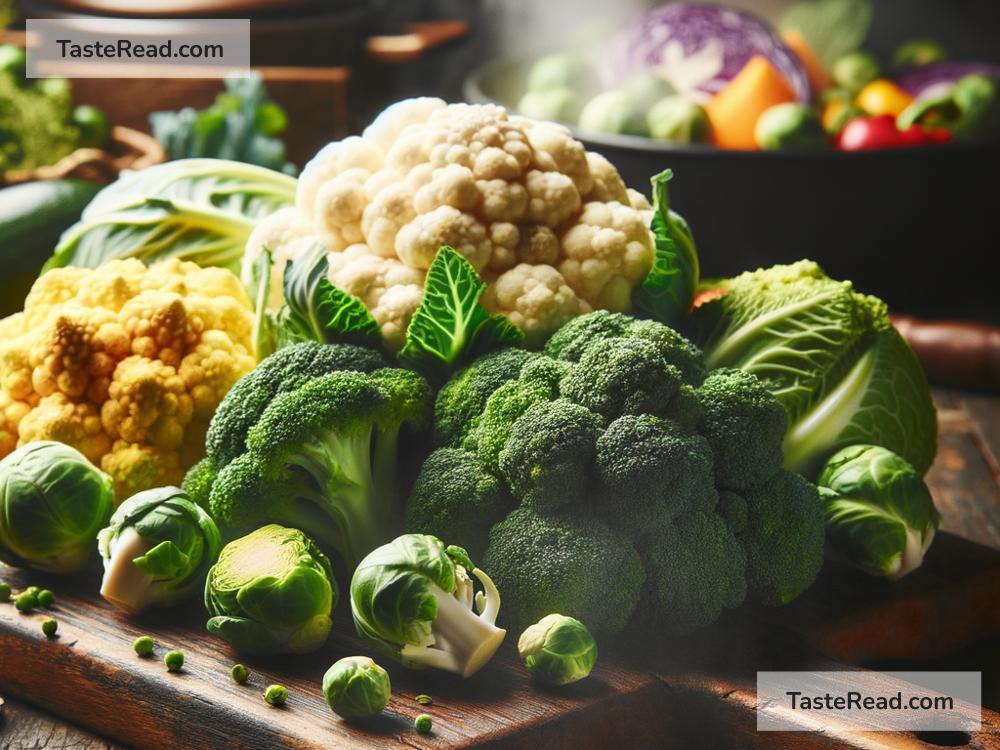The Role of Sulfur Compounds in the Taste of Cruciferous Vegetables
Cruciferous vegetables, such as broccoli, cabbage, cauliflower, and Brussels sprouts, have earned a mixed reputation when it comes to taste. Some people love their bold flavors, while others shy away from their strong, sometimes bitter notes. But what is it that makes these vegetables taste so distinct? The answer lies in sulfur compounds—small but mighty molecules that play a big role in flavor, nutrition, and even health benefits. In this article, we’ll explore how sulfur compounds influence the taste of cruciferous vegetables and why they matter.
What Are Cruciferous Vegetables?
Before diving into sulfur compounds, let’s take a closer look at what cruciferous vegetables are. These vegetables belong to the Brassicaceae family, which also includes mustard greens, radishes, kale, arugula, and bok choy. They’re celebrated for their high nutrient content, including fiber, vitamins C and K, and powerful antioxidants. However, their unique taste—sometimes described as earthy, nutty, or peppery—is what sets them apart.
The Science Behind Their Taste
The distinctive flavor of cruciferous vegetables comes from naturally occurring sulfur compounds called glucosinolates. These compounds are produced by the plants as a defense mechanism against pests. While they deter insects, they happen to be what gives cruciferous vegetables their characteristic taste and smell.
Glucosinolates themselves aren’t very flavorful. What really contributes to the strong taste is what happens when these compounds break down. When you chop, chew, or cook cruciferous vegetables, glucosinolates transform into new, more potent chemicals. Two key breakdown products are isothiocyanates and thiocyanates. These sulfur-containing molecules are responsible for the spicy, pungent, or bitter flavors that people either love or hate.
For example:
– The peppery kick of arugula and mustard greens comes from isothiocyanates.
– The slightly bitter taste in Brussels sprouts and kale can also be traced back to these sulfur compounds.
How Cooking Changes Their Taste
Cooking cruciferous vegetables can significantly alter their taste because heat affects the sulfur compounds inside them. For instance:
– When you steam broccoli or cauliflower, some of the sulfur compounds break down into milder forms, softening the vegetable’s flavor.
– On the other hand, overcooking can create an overly strong smell, often described as “sulfurous” or “rotten eggs.” This happens when heat releases hydrogen sulfide gas—a compound created from sulfur breakdown products.
For a balanced flavor, light cooking methods like steaming, stir-frying, or roasting work best. These techniques preserve the nutrients while reducing the intensity of the sulfur-driven taste. Some people also add acidic ingredients, like lemon juice or vinegar, to tame bitterness and enhance flavors.
Why Do Some People Find Cruciferous Vegetables Bitter?
Not everyone reacts to cruciferous vegetables the same way! While one person might enjoy the slight bitterness in kale or Brussels sprouts, another might find it unpleasant. This variation is partly genetic. Some people have taste receptors that are more sensitive to bitter flavors, thanks to a gene called TAS2R38. If you have a version of this gene that makes you highly sensitive to bitterness, you’re more likely to dislike cruciferous vegetables.
The sulfur compounds themselves interact with these taste receptors, magnifying the bitter sensation in some people. Interestingly, there’s evidence that as people age, they may become less sensitive to bitterness—explaining why kids might turn up their noses at Brussels sprouts, while adults often grow to enjoy them!
The Health Benefits of Sulfur Compounds
Sulfur compounds don’t just affect taste; they’re also part of what makes cruciferous vegetables so nutritious. Glucosinolates and their breakdown products (like isothiocyanates) have been the focus of many studies for their potential health benefits. Here are a few ways they’re thought to support overall health:
1. Cancer Prevention: Some studies suggest that isothiocyanates may help protect cells against damage and reduce the risk of certain cancers, including lung, colorectal, and breast cancer.
2. Detoxification: These compounds activate enzymes in the body that help flush out toxins.
3. Anti-inflammatory Properties: Sulfur compounds may help reduce inflammation, which is linked to a variety of chronic diseases, including heart disease and diabetes.
By eating cruciferous vegetables, you’re not only enhancing your meals but also giving your body a natural boost.
Tips for Making Cruciferous Vegetables Taste Delicious
If you haven’t been a fan of cruciferous vegetables in the past, don’t give up on them just yet! There are plenty of ways to make them appealing:
– Experiment with Cooking Methods: Roasting brings out a slightly sweet, caramelized flavor, while steaming keeps their taste mild.
– Add Flavor Enhancers: Pair them with garlic, olive oil, lemon juice, or spices to balance bitterness.
– Mix Them Into Dishes: Use kale in smoothies, add broccoli to pasta, or mix shredded cabbage into slaws for subtle hints of flavor.
Final Thoughts
Sulfur compounds are what make cruciferous vegetables so flavorful—and sometimes polarizing. While their taste might be bold and complex, their health benefits are undeniable. Whether you love or dislike the bitterness, there’s no denying the nutritional powerhouse that these vegetables represent. By experimenting with preparation methods and flavor pairings, you just might discover a new appreciation for broccoli, kale, and their cruciferous cousins. After all, these little sulfur compounds pack a big punch for your health and your palate!


